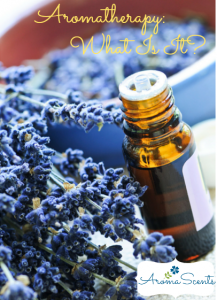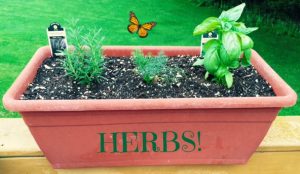What Is Aromatherapy?
If room sprays, bath salts, and essential oils come to mind when you hear the word aromatherapy,  you’re on par with what most people probably think. Aromatherapy, however, is much more than just a pleasing aroma or beauty product. It is a true healing modality whose potential is just being realized in the Western world.
you’re on par with what most people probably think. Aromatherapy, however, is much more than just a pleasing aroma or beauty product. It is a true healing modality whose potential is just being realized in the Western world.
Jade Shutes, founder and director of education of The East-West School for Herbal and Aromatic Studies, defines the term in the following way on the National Association of Holistic Aromatherapy’s website:
“As a holistic practice, Aromatherapy is both a preventative approach as well as an active method to employ during acute and chronic stages of illness or ‘dis’-ease.
It is a natural, non-invasive modality designed to affect the whole person not just the symptom or disease and to assist the body’s natural ability to balance, regulate, heal and maintain itself by the correct use of essential oils.”
Essential Oils: A Hot Topic
The popularity of essential oils has taken off in recent years due in part to two major MLM companies, doTERRA and Young Living. Both companies have put essential oils on the forefront of the home party scene, and many other quality and not-so-quality companies sell EOs online and in stores. But please keep in mind that you are wise to do your own research when using essential oils, especially concerning these two topics: using essential oils on children and the ingestion of EOs (ingestion if done, is best done under the care of an experienced, certified expert). Don’t just blindly accept what a sales rep or friend tells you. Essential oils are powerful — 75-100 times stronger than the dried herbs, so you need to exercise caution. I’ll be covering both of these topics in future posts, but for now I want to highlight a few points about EOs with children because there is so much misinformation out there that can be dangerous.
- Always keep your essential oils safely stored and out of the reach of children.
- Do NOT use essential oils on premature babies. They have high skin permeability, so it is not safe.
- When a baby is 6 months old, you may choose to try a baby massage using 1 oz of an unscented carrier oil to which you add 1 drop of an essential oil, such as lavender (Lavendula angustifolia). This is a 0.1% dilution. Generally, do not apply EOs unless you have diluted them first in a carrier oil. It’s always a good idea when first introducing a new product to try it on a small area of the body before applying it everywhere to make sure your child will not have a reaction to it.
- Do not use essential oils daily on your baby’s skin (dermally), as we don’t want the baby to become sensitized to the EO. A massage with EOs diluted in a carrier oil should be a periodic soothing treat for your little one. Of course you can do a daily massage without the EOs.
- Don’t give your child EOs to ingest without proper consulation. Always consult with a health/medical professional trained in this discipline.
What Exactly Are Essential Oils?
EOs are highly concentrated aromatic extracts that are distilled or expressed from plant material. Essential oils can be found in either the flower, flowering tops, fruits/zests, grasses, leaves, needles and twigs, resins, roots, seeds, and woody parts of a plant. About 15 percent of plants produce essential oils and only about 5 percent are good for use in aromatherapy.
 Certain EOs are located externally on the surface of the plant inside glandular trichomes. You can probably guess that some, though not all, herbs fall into this category, such as basil, lavender, Melissa, oregano, and peppermint, just to name a few. These essential oils are easily released by running your fingers along the plant. I’ve always loved herbs and their intoxicating scents.
Certain EOs are located externally on the surface of the plant inside glandular trichomes. You can probably guess that some, though not all, herbs fall into this category, such as basil, lavender, Melissa, oregano, and peppermint, just to name a few. These essential oils are easily released by running your fingers along the plant. I’ve always loved herbs and their intoxicating scents.
Other EOs are located internally in cavities. A few examples are sweet orange, tangerine, lemon, eucalyptus, and frankincense. EOs that are found in ducts include dill, yarrow, and Roman and German chamomile. Finally, a few EOs are secreted in cells. Examples of these include ginger and nutmeg. Ginger is a favorite of mine with its pungent aroma.
Activity: Become familiar with the aroma that is released from the actual plant as well as the aroma of the corresponding essential oil. If you  have time, take a few of your favorite EOs and then obtain the plant/fruit/root of it. For example, purchase a piece of ginger root and slice into it, smelling its aroma. Then open your bottle of ginger essential oil (Zingiber officinale) and compare the aroma. As you “train your nose,” you’ll be better able to distinguish pure essential oils from fragrance oils used in the perfume industry.
have time, take a few of your favorite EOs and then obtain the plant/fruit/root of it. For example, purchase a piece of ginger root and slice into it, smelling its aroma. Then open your bottle of ginger essential oil (Zingiber officinale) and compare the aroma. As you “train your nose,” you’ll be better able to distinguish pure essential oils from fragrance oils used in the perfume industry.
In the next post, we’ll discuss EOs and the Bible and how essential oils are absorbed into the body. In the meantime, enjoy the recipe for Sweet Peace room spray that you can easily make at home.
 Thanks for reading! Let me know if you use aromatherapy in your life by leaving a comment below.
Thanks for reading! Let me know if you use aromatherapy in your life by leaving a comment below.
 Jane VanOsdol has a Level 1 aromatherapy certification from Natural Options Aromatherapy, which follows the guidelines for certification from the National Association for Holistic Aromatherapy (NAHA). She is currently studying for a clinical certification with the East-West School for Herbal & Aromatic Studies and is developing a line of products. She is also available for workshops or one-on-one meetings. Visit (and Like) her AromaScents Facebook page for more information.
Jane VanOsdol has a Level 1 aromatherapy certification from Natural Options Aromatherapy, which follows the guidelines for certification from the National Association for Holistic Aromatherapy (NAHA). She is currently studying for a clinical certification with the East-West School for Herbal & Aromatic Studies and is developing a line of products. She is also available for workshops or one-on-one meetings. Visit (and Like) her AromaScents Facebook page for more information.
